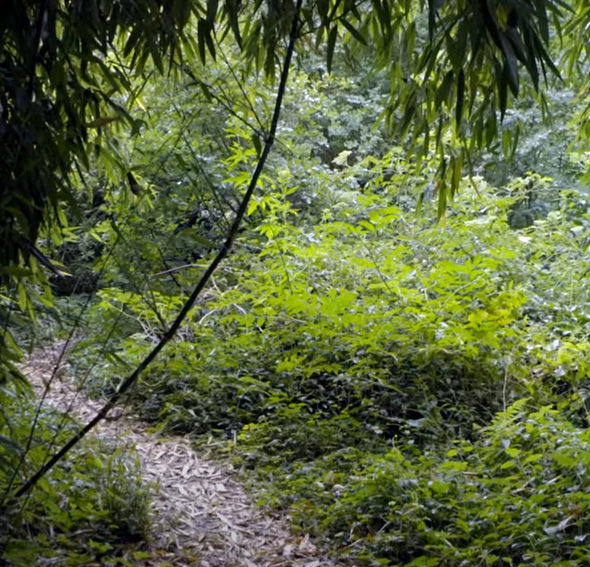What is a food forest?
96 weeks ago

We are very excited to be starting a new project at the Green Patch this year – planting a community food forest!
What is a food forest? It’s just what it says on the tin: a forest that produces food. It’s essentially a forest plating where all the plants, whether they be ground creepers, herbs, shrubs or trees, are food producing plants or a plant that provides other resources such as nectar for honey bees, or string from flax.
The Green Patch is a large site (2.5 acres) that’s dedicated to community gardening and food production and distribution to the local community. Some edges of the site are less frequented/accessible and don’t get as much attention as the rest of the site. These areas are perfect for a forest garden as forest plantings require less upkeep and attention whilst still helping us by providing herbs, berries and leaf for our veg boxes.
Food forestry is becoming considered an important form of food production in the era of climate change as they are more able to withstand heatwaves, drought, flood, cold etc. Unlike annual plant growing approaches that require frequent digging, food forestry sequesters carbon dioxide as the soil system is not disturbed and allowed to mature into a rich ecology. As the plants become well established they arrive earlier in the growing season, are more heat drought resistant, frost resistant, and are more nutritious. For example, Good King Henry, a wild perennial spinach, because of its taproot and perennial nature has one of the most nutritious leaves you can eat – way more nutritious than any annual green leaf.
Food forests, whilst producing food and resources can be very beautiful ornamental gardens. They also, of course, are excellent wildlife habitat. We are hoping our food forest at the Green Patch will be a foraging location for hedgehogs, native bees and our honey bees.
Here's a great short video introduction to Food Forests:
Products from a food forest can include:
Fruits e.g. Quince, Apple, Medlar
Berries e.g. Honeyberries, Raspberries,
Nuts e.g. Hazelnuts
Fresh herbs e.g. Bowle’s Mint
Herbs dried for teas e.g. Bergamot
Medicinal herbs e.g. Lady’s Mantle
Sweets e.g. Liquorice root, Sweet Cicely seed pods
Nectar for honeybees
Vegetables and green edible leaf e.g. Japanese parsley
Timber e.g. Hazel
String
Mulch for composting e.g. Comfrey
Plant stock
Here’s a list of many of the plants we’ll be adding to our new planting:
GROUND
Wild garlic
Lungwort
Sweet Woodruff
Nepalese Raspberry
Japanese Wineberry
Japanese parsley
Wild strawberry
HERBACEOUS
Bergamot
Bistort
Good King Henry
Lady’s Mantle
Valerian
Salsify
Sorrel
Comfrey (Bocking 14)
Sweet Cicely
Bowle’s Mint
Earth chestnut
SHRUBS
Redcurrant
Blackcurrant
Gooseberry
Blueberries
Aronia
Honey Berry
Saskatoon Berry
Japanese Quince
LARGE SHRUBS / SMALL TREES
Vranja quince
Autumn Olive
European Elder
TREES
Mulberry Chelsea King James
(We have a large stand of poplars nearby creating a lot of shade and negating the option for a good number of trees as there would be too little light left for the smaller plants)
Come and visit and see how it's going!
